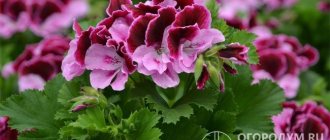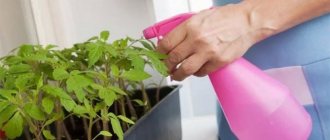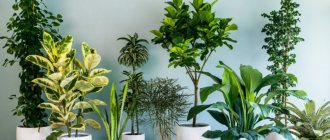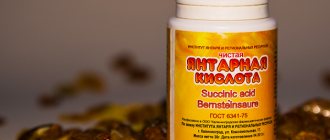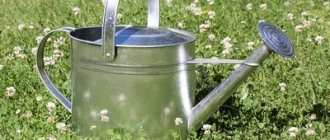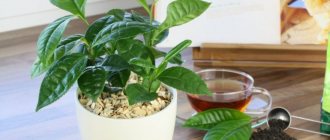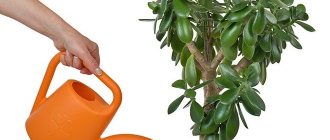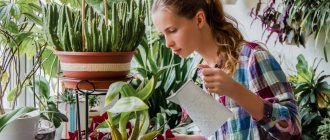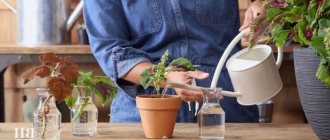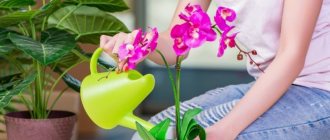Indoor plants always bring joy, peace and comfort to any person’s home. In order for flowers to be healthy and beautiful, they must be looked after. The main component of care is timely and correct fertilizing with fertilizers. In response to these actions, the flowers generously reward their owner with rapid growth and abundant flowering. Since the feeding area of indoor plants is limited by the boundaries of the pot, they need fertilizers like no other. Without them, flowers quickly deplete the soil and take all the beneficial substances from the soil, as a result there is nothing left for further good growth. Today there are a huge variety of fertilizers for indoor plants, each of which has specific benefits for flowers.
Latest articles about gardening
Strawberry diseases: photos and their treatment
Diseases of zucchini in open ground and the fight against them photo
Liquid vermicompost: instructions for use
When is it necessary to feed indoor flowers?
Indoor plants are fed only during the active growing season, when both their underground and above-ground parts grow and develop. It is during this period that fertilizers need to be applied. This rule does not mean at all that proper fertilizing is carried out only in spring and summer: there are also plants that not only do not have a complete dormant period and develop throughout the year, but also stars that bloom in autumn and winter. You need to choose the period when you need to feed each plant based on its growing season and its characteristics.
In spring and summer, all plants need feeding. The period of active development in crops, even those growing indoors, begins with an increase in daylight hours and lighting intensity. Typically, the growing season begins in March, and if the weather is favorable, it starts at the end of February. And with this, the period of active feeding begins. Active growing season ends in autumn, with a corresponding reduction in daylight hours and overall light intensity. The seasonal reduction in light usually manifests itself already in October, so the period of traditional fertilizing is usually completed during September.
Feeding in autumn and winter is not so easy to understand:
If the plant goes into a complete dormant period and completely stops growing, fertilizing in the fall and winter is not carried out at all. Typically, lignified and large plants, beautifully flowering crops that shed leaves or the entire above-ground part of the plant need to be stopped.
Reduced daylight hours, slower growth, cool wintering, partial dormancy require a reduction in fertilizing for the autumn-winter period. For example, for many decorative deciduous plants, although rare, winter fertilizing that maintains stable conditions is necessary to preserve the beauty of the leaves.
If the plant blooms in the cold season or autumn, then fertilizers are continued to be applied to it.
Correct ratio of vital elements
The essential chemical elements necessary for the growth and development of plants are nitrogen, phosphorus and potassium. Nitrogen is required for the growth of shoots and leaves, phosphorus - for the development and strengthening of the root system, potassium - for flowering, fruiting, and increasing immunity.
The group of essential macroelements in accordance with D.I. Mendeleev’s table is designated as NPK. For example, on a bag of Agricola for indoor plants we read the following: N: P: K, and below the percentage ratio is 23:11:23. That is, nitrogen and potassium are contained in equal and greater proportions than phosphorus. This means that this fertilizer is equally suitable for both decorative deciduous and flowering plants, as stated. For those who do not yet want to complicate their task by selecting fertilizers for a certain species group of plants, the use of such complexes is a good solution.
Depending on the diversity of home flora, it makes sense to choose universal or specialized fertilizers
In addition to the three main elements, no less important are calcium , magnesium , sulfur , as well as trace elements : iron, copper, manganese, molybdenum, zinc, boron. As a rule, they are present in ready-made complexes.
Types of fertilizers for indoor flowers
All fertilizers are conventionally divided into two large groups: mineral and organic. Organic fertilizers are of plant or animal origin. These can be waste products of living creatures: livestock manure, bird droppings, aquarium water. Plant nutrients include sludge from the bottom of reservoirs, compost, peat, and some types of food waste.
Mineral fertilizers appear as the results of the mining industry, processing of raw materials, and industrial waste. Most often, a mineral appears as a substance containing large accumulations of one element. For complex feeding, prepare a mixture of elements that satisfies all the needs of the plants. The main mineral elements important for the development of indoor plants are nitrogen, potassium and phosphorus.
A separate group of humic fertilizers can be distinguished. Humus as an independent preparation is ineffective for flowers, but in combination with one of the minerals, it is a high-quality fertilizer. Potassium humate is especially useful for indoor flowers.
Based on their chemical composition, fertilizers are divided into:
- alkaline (nitrate, lime);
- acidic (ammonium salts and sulfates, potassium salts);
- neutral (organic and superphosphate).
By release form:
- liquid;
- granular;
- in the form of plates (tablets).
At home, liquid mineral or complex fertilizers for indoor plants and flowers are most effective. It is convenient to use granular fertilizers as the main fertilizing applied directly into the ground during replanting in the spring. They release nutrients gradually, without oversaturation and burns of the root system.
Latest articles about gardening
Coffee grounds as fertilizer for indoor plants
Climbing fast-growing plants for hedges
To create hedges and garden arched compositions, plants are used that can weave a dense, dense crown in just a few spring months. Flowering vines and climbing shrubs are suitable for this.
Clematis
One bush of this perennial woody vine from the Ranunculaceae family can completely transform a garden, showering it with a waterfall of flowers of different colors. The graceful leaves of clematis form dense growth, strewn with large star-shaped flowers of various shades. To get a beautiful bush, a young seedling is pinched, achieving the formation of a powerful root system and many subsoil branches. To create compositions from clematis, build high arches or openwork stands 2-2.5 m high, which the plant braids over the course of 1 season.
Clematis hybrid
climbing rose
A creeping or climbing rose is a type of rose hip with long shoots, whose climbing branches are used for making hedges, landscaping gazebos and garden structures. Large-scale compositions are created from roses - lushly blooming columns, arches, hedges. They look impressive and combine with any garden crops.
Unusual actinidia
Shrubby, ornamental, fruit-bearing liana actinidia is a deciduous plant that is used for landscaping large-scale garden objects. Actinidia grows up to 12 m in length and quickly covers nearby objects with a dense green carpet. Under a cover of heart-shaped leaves you can hide an unsightly high fence, a dilapidated building, or turn an old tree into a green waterfall.
Actinidia kolomikta
Actinidia blooms in early summer, and its fruits ripen in August-September. This is a close “relative” of kiwi, but still not kiwi. According to the observations of some gardeners, cats like actinidia for the characteristic smell of valerian, so you need to be vigilant before planting the plant.
Honeysuckle Honeysuckle
A climbing variety of honeysuckle is a vine that blooms profusely with white, pink or burgundy inflorescences. Flowering, during which there is a thick aroma in the garden, lasts from May to July. Then the plant is covered with bright orange fruits, which, standing out against the background of green foliage, give it a decorative appearance. Wildly blooming honeysuckle is used for vertical gardening of garden terraces and gazebos; it can also be used to hide unsightly structures located in the garden plot.
Honeysuckle Honeysuckle
In our conditions, the plant’s buds open closer to mid-spring, and the first leaves may appear in late April – early May. Full leaf cover can be observed towards the end of spring. Leaf fall lasts from late September to November.
Feeding indoor flowers with onion peels
At home, onions will successfully cope with the health improvement, protection and feeding of flowering and deciduous plants, except for succulents and plants with fleshy leaves, including aloe, cacti, fat plants and ficus.
We will need to prepare a decoction.
Place a good handful of husks in a saucepan, pour two liters of hot water into it and cook for 5 minutes over low heat.
After the broth has stood for a couple of hours, it should be filtered and used for spraying or watering flowers.
This decoction does not last long, so throw away any leftovers immediately. And the procedure can be repeated in a month.
Feeding indoor flowers with aquarium water
In the water where aquarium fish live, a harmonious biological balance is established over time, thanks to which the life of aquatic inhabitants is maintained. It is largely due to the presence of beneficial bacteria.
When used for watering plants, the quality of the soil improves and the process of processing complex compounds is accelerated. This fertilizer should be used only during the vegetative phase, no more than once a month, so that the plants grow well and quickly.
Annual fast-growing plants
Fast-growing annuals are suitable for various purposes: creating park forms, hedges, green screens, and decorating flowering arches. For flower beds, compositions with a long flowering period are selected; multi-level compositions of plants of various heights are made in flowerpots. Marigolds, daisies, salvia, fuchsia, and cosmos are suitable for these purposes.
Most plants grown for one season develop rapidly and are characterized by abundant flowering, while they are unpretentious in care. In the fall, an area free of plantings is easy to cultivate and prepare for winter.
Salvia Playona
The supports entwined with vines look elegant and unusual. You can quickly build temporary stands from scrap materials. Old trees are also suitable for supports. Pegs are driven into the ground or poles are dug in and ropes are pulled between them. Nasturtium, impomea, decorative beans, bindweed, and sweet peas are planted next to the structure.
Feeding indoor flowers with banana peels
Much is known about the benefits of banana for the human body, but few gardeners know about its beneficial effect on indoor flowers. Both the fruit itself and its peel contain a large amount of vitamins and macroelements, among which phosphorus, magnesium and potassium are especially useful for green pets. Straw, bone meal, fish meal, whey, and potato peelings are also used as organic fertilizer. Houseplants always respond positively to this type of feeding, which can be done in several ways.
Option 1. Pour 250 ml of water into the banana peel and leave to brew until foam forms. The finished product is used twice a month, replacing standard watering.
Option 2. Banana waste is dried and crushed using a coffee grinder, and the resulting flour is simply mixed with the soil when replanting flowers or immediately after it. In the latter case, you can simply scatter the powder over the surface of the substrate.
Latest articles about gardening
The best varieties of apples
Top best varieties of cucumbers: the most delicious and most productive
The most delicious varieties of zucchini
Geranium is a green amulet!
Our wise ancestors perceived geranium as a symbol of warmth and comfort in the home. Indeed, it is difficult to imagine a window sill in a Russian upper room without geraniums. By the way, according to astrologers, geranium protects against the “evil eye” and extinguishes any negative energy in the house.
- Geranium is considered a talisman; it protects the house from the invasion of various uninvited guests and extinguishes quarrels. Geranium makes people more tolerant and kinder.
- The aroma of the flower helps relieve depression and strengthens the nervous system. If a pot of geranium is placed in a room where a geopathogenic zone is located, the plant will neutralize all its harmful effects.
- Geranium also helps in love - for this, a scarlet geranium flower should be given to your loved one. In order for a lover or beloved to reciprocate, geranium must remain in his house.
- Geranium leaves contain essential oil; to verify this, simply rub the leaf with your fingers. The oil stands out especially strongly in the sun in summer. In this way, the plant can be protected from overheating. There is an opinion that if a geranium is located outside, then in hot, dry weather at sunset it is easy to notice a glow above it. A similar effect is achieved by the essential oils actively secreted by geranium.
- Geranium leaves are not liked by moths, flies and other insects. It is recommended to rub geranium on pets to get rid of insects.
- Geranium can be used to treat headaches and colds.
- This plant purifies the air and kills harmful bacteria. To feel more energetic, just sit next to a plant for 10 minutes every day.
- To purify the air, you can use geranium oil, which is sold in pharmacies. Just 3-4 drops in the aroma lamp will be enough. Geranium oil regulates hormonal metabolism. It also stimulates the senses, so you can add 5 drops of geranium oil to the aroma lamp during a romantic dinner.
- Geranium is extremely useful for people with problems related to the nervous system, suffering from hypertension, insomnia, gastrointestinal and heart diseases.
- Geranium provides significant help for a diseased gallbladder and liver.
- A geranium leaf applied to a sore spot will relieve pain from otitis media, radiculitis, and toothache.
- Traditional healers for toothache recommend not placing a geranium leaf in the mouth, but tying it to the outside of the cheek.
- For radiculitis, the leaves are crushed and then applied to the back as a compress.
- A similar compress is tied to the arm (the place where the pulse is) at high pressure.
- Simply growing geranium in the house, according to healers, prevents the appearance of tumors.
- And parapsychologists say that geranium evens out the human biofield disturbed by diseases.
PS If you liked the post, share it with your friends!
Source
Feeding indoor flowers with coffee grounds
This natural fertilizer is widely used by many gardeners. Sleeping coffee makes the nutrient substrate looser and lighter, increases acidity and the amount of oxygen. Features: increasing soil acidity does not have a positive effect on all indoor plants. Fertilizing with sleeping coffee is recommended for azaleas, hydrangeas, lilies, rhipsalis, roses and many evergreen species.
Application: Mix coffee grounds with soil mixture in a pot.
The most famous and effective homemade fertilizers for feeding indoor plants are reviewed. We will be glad if it becomes easier for you to feed indoor flowers, and they respond with their beautiful appearance.
